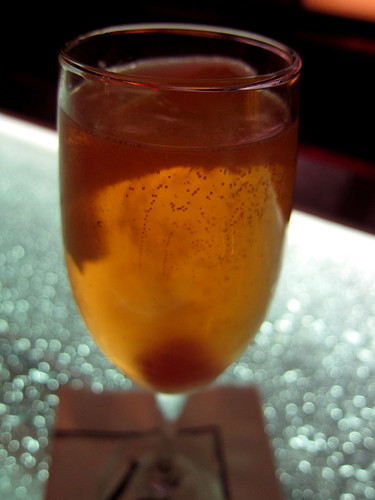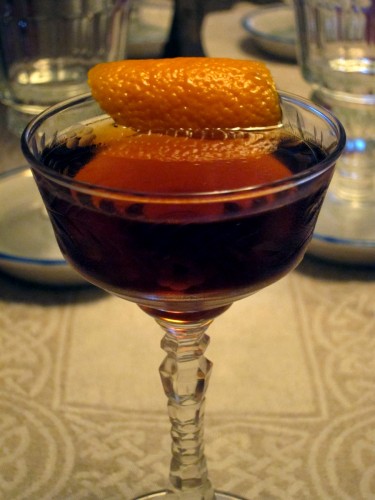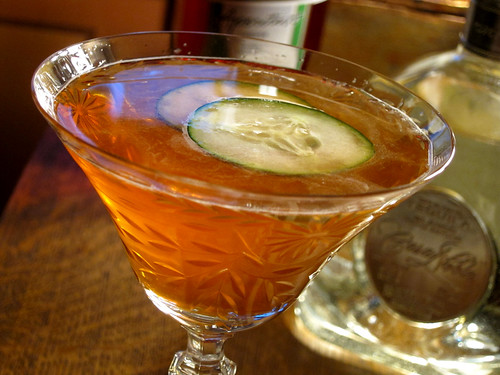Cocktail of the Day: The Sazerac Royale
“Come and see me if you get a chance,” read the message from Chris McMillian. “I’ve got a new drink for you.”
To describe my reaction as “intrigued” would be a fairly massive understatement.
(If you’re not familiar with Chris, read Wayne Curtis’ article about him in Imbibe, and watch some videos of him making cocktails, especially the Mint Julep. Well, maybe not that last one; that one’s better seen and sipped in person.)
While we were home in New Orleans for two weeks a visit with Chris, dean of New Orleanian bartenders and his lovely wife Laura, both of whom are founding board members of the Museum of the American Cocktail, was pretty high on our list. We’d been hoping to get to Cure and French 75 as well, but seven days at the Fair Grounds, a trip to Acadiana and visits with family and friends cut down on our bar time. We were lucky enough that timing worked out such that we were right near Chris’ bar when he was on during one of our only free days in the Quarter/CBD.
Laura stopped by not long after we arrived and we were having a grand time all around when Chris asked if we’d like to taste something. Despite his great talent and profoundly deep knowledge of New Orleans and cocktail history, Chris is a pretty modest guy and doesn’t consider himself the type of bartender/mixologist who’s constantly coming up with new drinks. “If I come up with two new drinks a year that’s pretty good for me,” he says. In my experience those two drinks tend to be worth waiting for, and this was no exception.
The drink he prepared for us falls into the category of “Why didn’t anyone think of this before?” or even, “Hell, why didn’t I think of this?!” (Well, because he’s Chris and I’m me, that’s why.) The drink was so simple, yet so sophisticated and absolutely delicious.
It has its history in a few different places, starting with the classic Champagne Cocktail. Traditionally it’s a sugar cube soaked with Angostura Bitters, dropped into a Champagne flute and topped with bubbly. The Champagne treatment in a cocktail is often acknowledged by appending the word “royale” to a drink’s name, as in the classic variation on the Kir cocktail. That began as a combination of crème de cassis (blackcurrant liqueur) poured into white wine, a drink that was once commonly called blanc-cassis but was eventually called Kir in honor of Félix Kir, a mayor of Dijon, France in the early 20th Century who loved the cocktail and was frequently seen quaffing it. Substituting Champagne for the white wine made it a Kir Royale.
Simple enough, then — give a Sazerac the Royale treatment. This is an ideal apéritif and a perfect Sazerac variation to serve to those for whom a strong whiskey cocktail is a bit overwhelming. This drink is a knockout.
THE SAZERAC ROYALE
by Chris McMillian, Bar UnCommon, New Orleans1/2 teaspoon Herbsaint Original or absinthe
1 sugar cube
3-4 dashes Peychaud’s Bitters
1 ounce rye whiskey (Chris used Old Overholt)
4 ounces chilled Champagne
Lemon peelRinse a Champagne flute with the Herbsaint or absinthe and discard the excess. Drop the sugar cube into the flute and soak with the bitters. Add the whiskey, then carefully top with the chilled Champagne. Twist the lemon peel over the surface, rub it around the rim and commit the sacrilege of dropping it into the drink.
I’ll post Chris’ other new one later this week.








